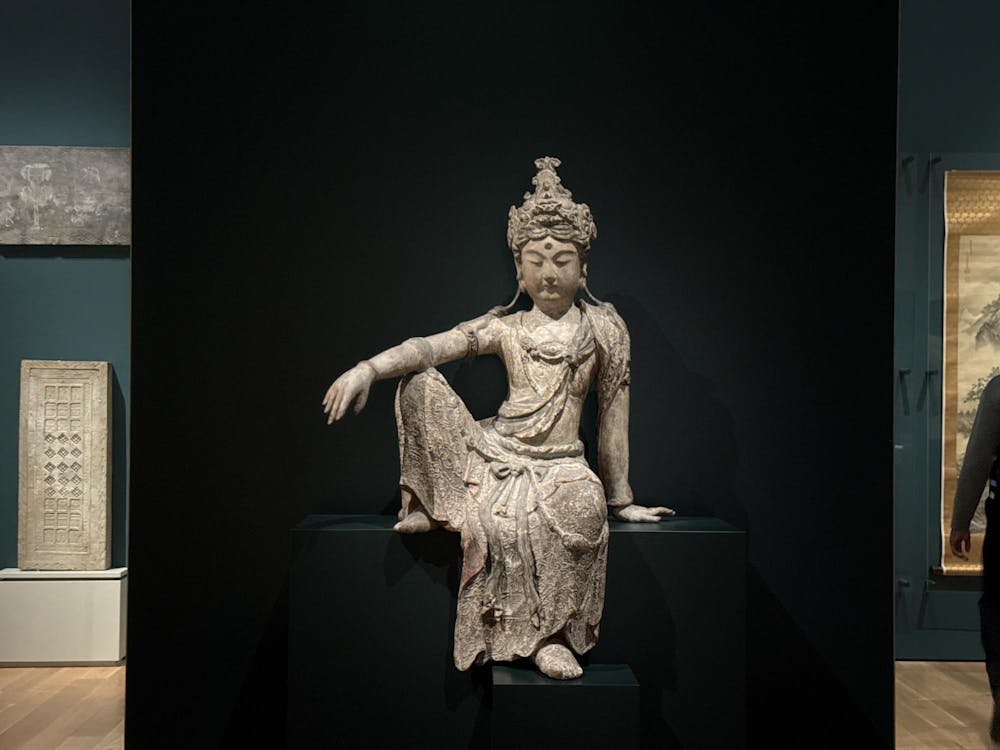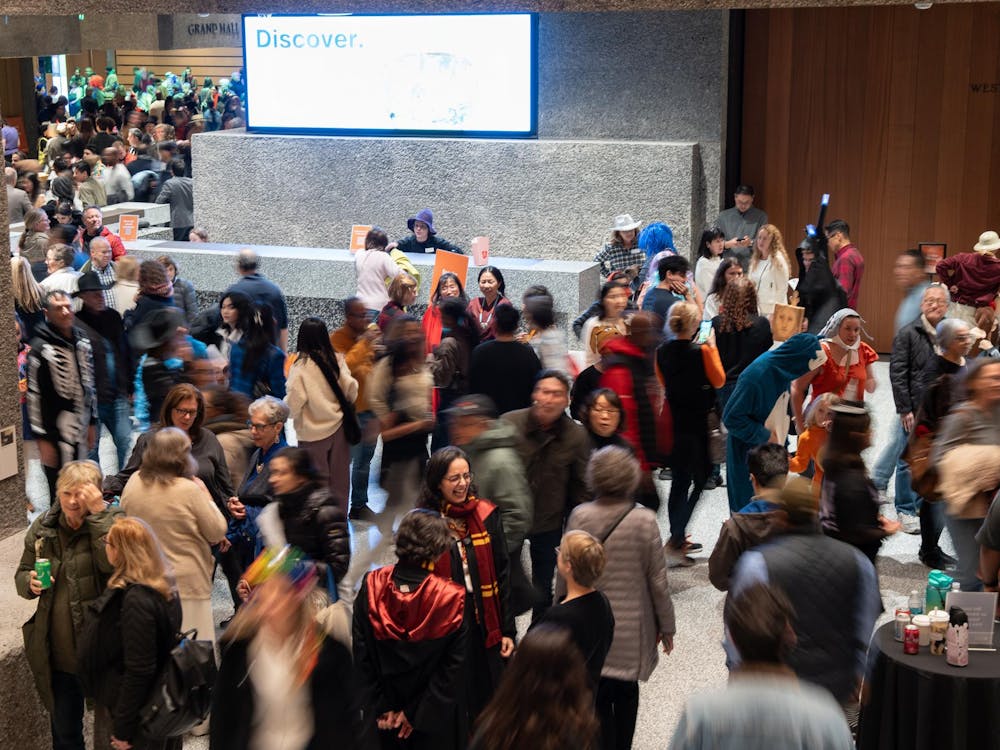Showcasing artworks from Chinese handscrolls to Pakistani Buddhist figurines, the Asian Art Pavilion in the newly renovated Princeton University Art Museum undertakes a near-impossible task: representing the vastness of Asia in a room only slightly larger than a lecture hall. I entered the Pavilion with the expectation that the layout of the room would be by country — and my expectations were both met and broken.
“It’s an incredibly difficult thing to bring together objects from the enormous spatial, temporal, and cultural reach of what we describe in one short word as ‘Asia,’” Professor of Japanese Art History Rachel Saunders wrote to The Daily Princetonian.
As I entered, I immediately noticed that East Asian cultures were integrated into varying themes, such as ‘Lacquered Objects.’ This section featured lacquerware, a medium that originated in ancient China. With a collection spanning both time and geography, from the Chinese Eastern Zhou dynasty (771–256 BCE), the Japanese Edo period (1603–1868), and the Iranian Safavid dynasty (1501–1736), this art form highlighted the spread of Chinese influence across the continent, traced through a singular common medium.
The Pavilion’s South Asian and Southeast Asian pieces were isolated on the left side of the gallery, creating a feeling of division. As far as I could tell, the only representation of South and Southeast Asia comprised a small case featuring Buddhist sculptures and religious figurines from Cambodia, Pakistan, and India.
Given that there is also a collection of Buddhist sculptures housed in a hallway outside of the pavilion, I felt the section lacked a variety in subject matter. While I expected to see secular items like household objects and ceramics, as I had seen in other parts of the gallery, the display was limited to religious items.
As the back wall inside the left wing was dedicated to the Silk Road — thus featuring more Chinese art — a South Asian and Southeast Asian presence felt like an afterthought.
The pavilion’s curator, Zoe Kwok, is “a Chinese specialist that is working with other colleagues to curate the entire collection, leading to people moving outside of their specialities,” Yuchen Wang GS, a Ph.D. student in the Art and Archaeology department, said.
While the museum is only currently showing 5 percent of its whole collection, according to Wang, the Pavilion may begin to rotate through its pieces.
However, there were also aspects of the pavilion I enjoyed. I appreciated its overall structure, which fluidly blended scrolls, vases, and paintings, holistically embodying the vibrant history of East Asia.
Instead of the familiar cultural segmentation or chronological order that can constrain Asian history to Western stereotypes, the room’s venture to interweave varying pieces — old and modern; Chinese, Japanese, Korean, and Tibetan — placing them in conversation with one another, showcased a more nuanced perspective.
Even within the same culture, pieces interacted thoughtfully with one another. A case featuring Korean ceramics — including pieces such as a maebyeong, a Korean plum-shaped bottle from the Goryeo dynasty (918–1392); an 18th-century porcelain jar; and ceramics by modern artist Young Sook Park — led me to compare the diverse styles throughout Korean history.
On the right side of the pavilion, I was greeted by a fascinating contrast of Japanese prints. The layout guides viewers through the transition from the Edo period’s woodblock prints of ordinary people to landscape images of bridges and gates, showcasing the impact of photography on Japanese art. Here, I could see the clash between modernity and the desire to hold onto traditional styles. I appreciated the pavilion’s decision to include modern photographs.

I also appreciated the pavilion’s juxtaposition of two large scrolls at the center of the back of the room. One was a handscroll by one of the Four Great Masters of Song calligraphy, Huang Tingjian, the other a more modern 2010 woodcut scroll by Ji Yunfei. The former was an example of “running script,” while the latter depicted the Three Gorges Dam migration and its effects on millions of people. The calligraphy scroll was filled with elegant characters, a traditional Chinese art form seen across various media. On the other hand, Ji’s scroll could be compared to a watercolor painting, with sketches of humans and natural scenes to tell a story not with words, but visceral images. I enjoyed how much the works emphasized the artist’s role as a storyteller, their thoughts flowing out in different directions.
“[The Pavillon’s curators] reshape ways of how people understand. Instead of telling a narrative, they are trying to engage the viewers to think. The Museum is a space for viewers in dialogue,” Wang said.
Kate Chun is a writer for The Prospect and part of the Class of 2029. She can be reached at kc6370@princeton.edu.
Please send any corrections to corrections[at]dailyprincetonian.com.








